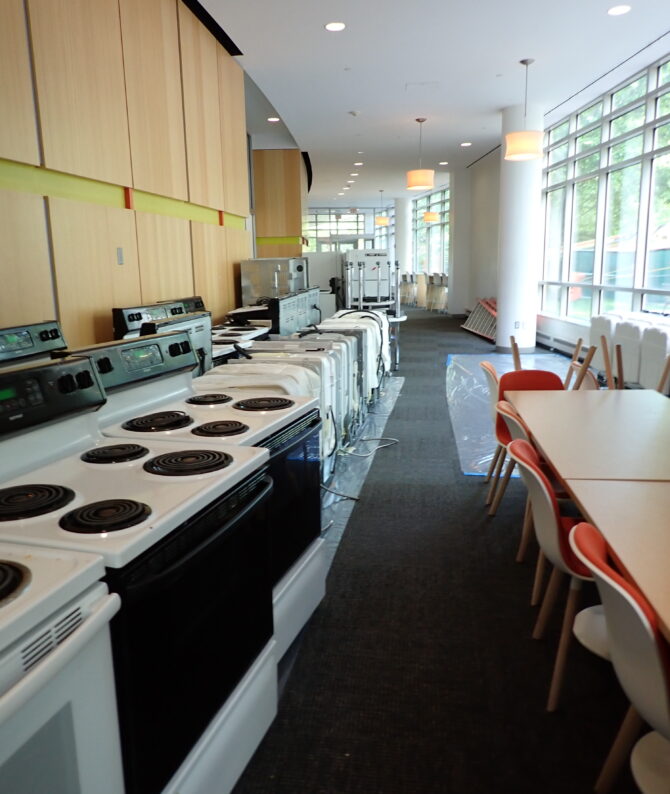Northeastern Breaking Down Barriers and Building Eco Homes

Northeastern University’s Solar Decathlon Team (NUSD) is breaking barriers and building houses, all with a sustainability approach in mind.
Founded in 2020, NUSD brings together students across a wide variety of academic backgrounds and levels of study, from undergraduate to postdoctoral research. The team participates in the U.S. Department of Energy’s Solar Decathlon, an international collegiate competition challenging students to develop energy-efficient, affordable, and resilient buildings within their local community.
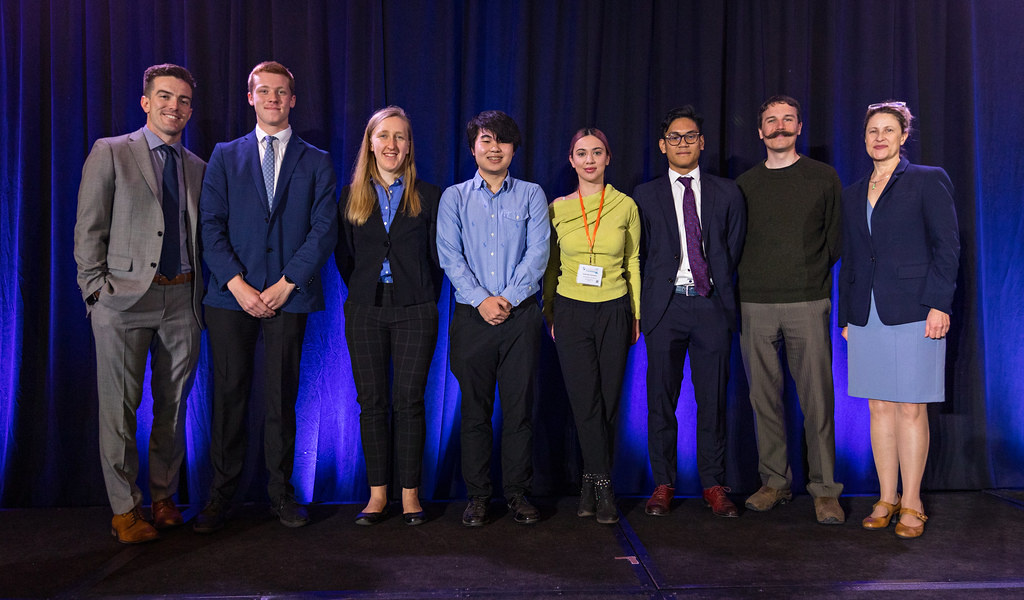 |
This year, NUSD is a Solar Decathlon Exhibition Team, working on designing, building, and operating their own fully functional series of “Eco Homes” in the Roxbury neighborhood of Highland Park, also known as Fort Hill. The project proposal features three low-scaled residential buildings across two neighboring building sites. The units emulate the style of traditional triple-deckers, honoring the history and character of the Boston area, but with the incorporation of modern and sustainable design elements, in order to achieve affordable, net-zero housing.
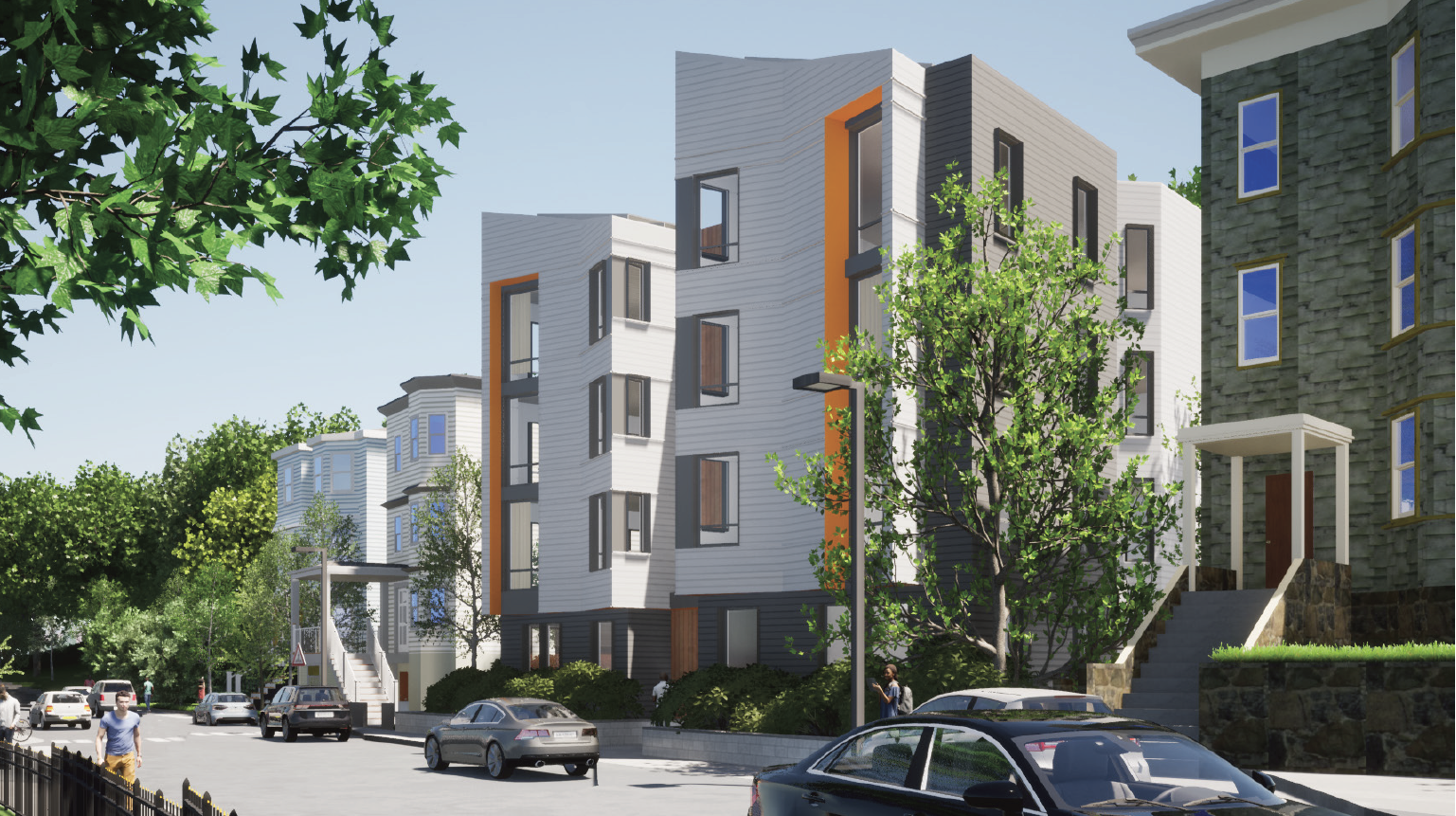 |
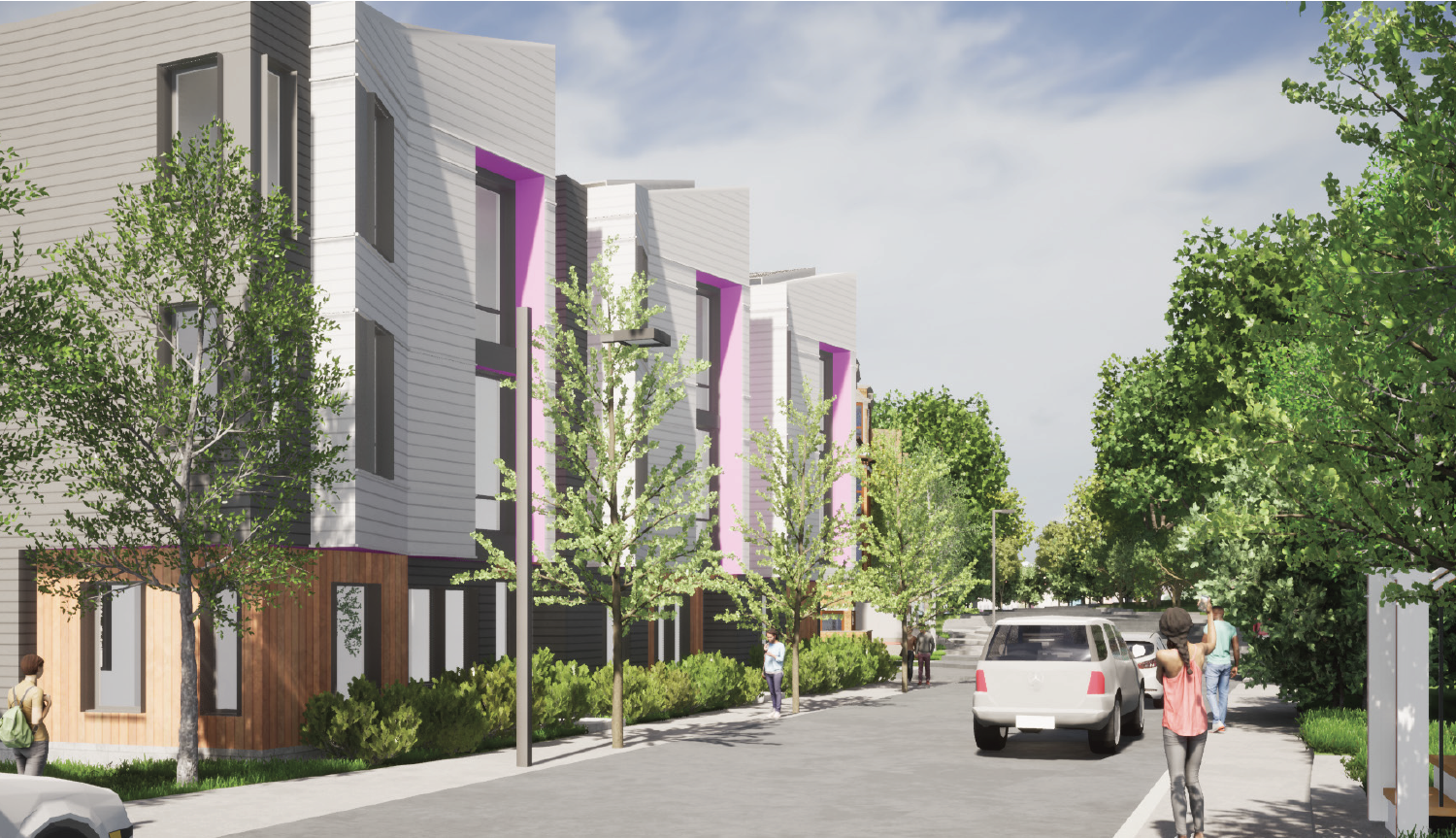 |
April 2022 marked a major milestone for NUSD, as their initial project proposal won contingent approval to continue to the next phase of the competition. This came along with an award of $50,000 in funding from the DOE. They will be presenting their work at the National Renewable Energy Lab each year as their project progresses. Construction will tentatively begin by the end of 2024, with completion in 2025.
This may seem like a daunting process, but for students Ted Walinskas and Aasav Harania, Project Lead and Technical Lead for this year’s team, the objective comes down to collaboration. “We had to kind of take a step back and look at how to approach it,” says Walinskas. “We realized that this is not going to be just us, we’re not going to be able to do this ourselves. This is going to be a team effort.”
NUSD is partnering with Boston-based design and development company Urbanica, along with a team of engineering, coding, and legal consultants, to complete the project. With a variety of outside developers and consultants involved in Eco Homes, the process of balancing and designating responsibilities for the project requires “ongoing conversation,” according to Walinskas. Urbanica is legally and financially responsible for the project’s development but, as part of the DOE’s Solar Decathlon, NUSD is spearheading the energy efficiency initiatives. “We’re also working a little bit on the community engagement side,” Walinskas describes.
The DOE’s Solar Decathlon does not place specific emphasis on community engagement but for Walinskas and Harania, it was a necessity. “We’re in a city with a housing crisis, and we have to think smart about what we would need to build, what are the concerns of the residents,” says Walinskas. Harania elaborates, “When we were doing our site surveys, a lot of our students actually went out and were speaking to a lot of the residents on [the proposed street of the Eco Homes project] and saying, ‘What do you think [about] the new building that came out a couple of years ago? How did it affect you and how [might it affect you if] another building comes in here?’”
One of the biggest concerns NUSD sought to address in their project initiatives was gentrification. “Our housing would be coming through the City of Boston’s income-restricted housing distribution,” says Walinskas. Income-restricted housing helps to ensure Boston residents are protected against displacement from their local neighborhood due to rising market prices. Recognizing a need for homeownership in the Highland Park area as well, NUSD’s Eco Homes will also be developed for purchase rather than accommodating rental units.
Designs for Eco Homes will target energy efficiency and sustainability through a variety of strategies and techniques. Key features include solar panels, bioswales (vegetated channels used to absorb and transport stormwater runoff), and drought-tolerant landscaping to reduce water use. For Walinskas, one particularly exciting approach is the team’s decision to reuse existing materials left over from previous developments. “There’s actually some old kk puddingstone from the former buildings on that site back in the 1960s,” says Walinskas. Roxbury puddingstone, a sedimentary rock embedded with pebbles resembling the fruit in a traditional Christmas pudding, can be found underlying much of Roxbury and some surrounding neighborhoods. As the region developed, the puddingstone was removed from the land for construction and began to appear in walls, foundations, and even churches, creating a characteristic and distinctive look in the Roxbury area. “There’s a lot of old homes in Boston and people feel strongly about keeping the character of the neighborhood, and that includes the materials used,” Walinskas notes. The team is currently working on identifying “the most effective way to use [the] remaining puddingstone” in their designs, such as in the groundwork or the exterior of the buildings.
 |
Maximizing their energy efficiency, Aasav Harania emphasizes the team’s use of Passive House design strategies, as well as their plan to achieve LEED Platinum certification. “Part of the strategies that we’re using is solar design work,” says Harania. “But the biggest one right now is reducing our energy usage in the building through energy modeling and iterative design work in the most cost-effective way.” The team aims to incorporate an integrated Building Automation System (BAS), which will connect and automate certain functions of the buildings, such as heating, ventilation, and air conditioning, in order to minimize extraneous energy usage. Harania explains, “We’re understanding the occupant, and how the occupant uses a building and controlling each system interconnectedly, all together with a control system.”
Walinskas further notes, “I think everyone has … a different thing they’re really excited about, which is kind of the fun part. There’s a bunch of sub-projects within the project as a whole.” With five technical subgroups, including Architecture, Structural Systems, MEP & Energy Systems, Landscape, and Home Automation, NUSD is able to designate tasks for achieving different project goals while also maintaining a cohesive overall vision.
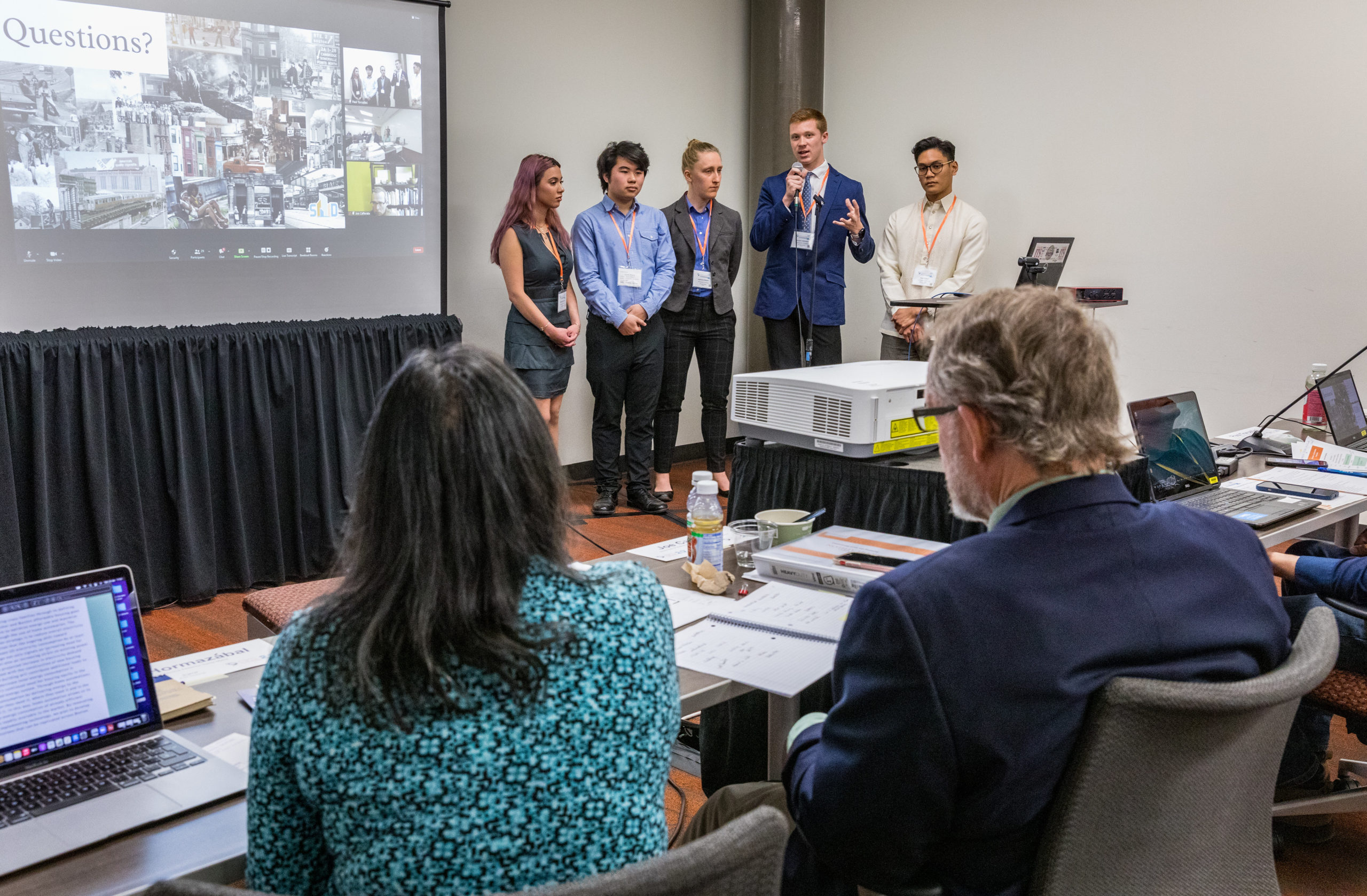 |
Looking to the future, Walinskas and Harania seek to continue strengthening the principles of NUSD’s core mission. “We’re trying to create an organization where we’re reaching out to all the resources that the school has… the computer science department is working with us, we have the civil environmental department working with us, the mechanical department, the energy systems department, the architectural [department], all creating and working together,” says Harania. NUSD’s collaborations with members of the Greater Boston community have also helped to facilitate new co-ops for many members of the team.
For Walinskas, being part of NUSD is not about having “the largest, most successful project, but that everyone can take away knowing how to do a bunch of different stuff and actually be able to join a lot of engineering firms, architecture studios, actually be able to take lead, know what they’re doing… that’s actually pretty cool. Because sometimes stuff is built and it’s really big and large, but that doesn’t necessarily mean it’s the most successful building. It’s building what’s right and keeping a happily growing community.”
NUSD welcomes students of all backgrounds and levels of study, and no experience is necessary to join. For more information about the Team and how to get involved, visit https://solardecathlon.sites.northeastern.edu/ or email [email protected].
Written by Daria Healey, Sept 14th, 2022


